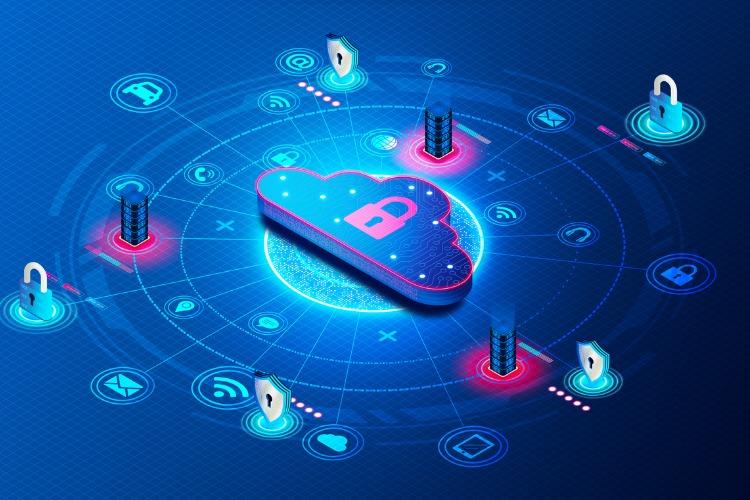How Businesses Can Strengthen Security with Linux Device Management
- Linux-based systems are widely used in businesses, but without proper security management, they can be vulnerable to cyberattacks, data breaches, and compliance violations.
- Key security measures include strong access controls, automated system updates, continuous monitoring, and expert risk assessments to identify and fix vulnerabilities.
- Business leaders play a crucial role in security by prioritizing cybersecurity policies, investing in employee training, and ensuring security best practices are followed.
- Proactive security strategies help businesses reduce risks, protect sensitive data, and maintain compliance, making cybersecurity a key business priority rather than just an IT concern.
Cyber threats are becoming more sophisticated, and businesses need to ensure their IT systems are secure, reliable, and compliant. Many organizations rely on Linux-based systems to run critical operations, from cloud infrastructure to internal servers. While Linux is known for its stability and security, it is not immune to cyber risks. Without proper management and security controls, businesses can face data breaches, ransomware attacks, and compliance violations.
For business leaders responsible for security strategy, understanding how to protect Linux-based systems is crucial. This doesn’t require deep technical expertise—it requires the right security approach, strong policies, and expert guidance.
One of the most effective ways to evaluate your company’s Linux security posture is through risk assessment services from an expert. These assessments identify vulnerabilities, misconfigurations, and security gaps, helping businesses strengthen their cybersecurity strategy before threats emerge.
This guide will break down the key risks businesses face with Linux systems, the best ways to secure them, and how to ensure long-term security success.
1. The Business Risks of Poor Linux Security
Many businesses assume that Linux is naturally secure, but mismanaged or outdated systems can create major security risks. Some of the biggest threats include:
- Data breaches – Weak security controls can expose customer, financial, or proprietary business data.
- Cyberattacks – Hackers exploit vulnerabilities in unpatched Linux systems, leading to malware infections, ransomware attacks, or unauthorized access.
- Operational disruptions – A security breach can shut down critical business operations, leading to financial losses and reputational damage.
- Compliance violations – Businesses operating under regulations like GDPR, HIPAA, or ISO 27001 must meet strict security requirements. Poor Linux security can result in regulatory fines and legal consequences.
Executives and decision-makers don’t need to understand the technical details of Linux security, but they do need to ensure their teams are following best practices and implementing proper safeguards.
2. Key Steps to Secure Linux Systems in a Business Environment
Business leaders should focus on strategic actions that improve Linux security without requiring in-depth technical knowledge. The following key areas are essential for protecting company infrastructure.
Implement Strong Access Controls
One of the most common causes of security breaches is unauthorized access to systems. Companies should:
- Limit user permissions so employees only have access to the systems they need.
- Require multi-factor authentication (MFA) for logging into Linux systems, especially for remote access.
- Regularly review and update user access to prevent former employees or third parties from retaining unauthorized access.
Keep Systems Updated and Secure
Unpatched software is one of the easiest ways for hackers to exploit a business. To reduce risks:
- Automate system updates to ensure critical security patches are applied as soon as they are available.
- Regularly audit systems to identify outdated software that may need upgrading or replacing.
- Use trusted sources for software and avoid unverified third-party applications that could introduce malware.
Monitor for Security Threats
Continuous monitoring helps businesses detect suspicious activity before it leads to major security incidents. Best practices include:
- Setting up real-time security monitoring tools that alert teams to potential threats.
- Using automated security logs to track unusual behavior, such as unauthorized login attempts or unexpected system changes.
- Conducting regular security reviews to ensure that monitoring tools are functioning correctly and covering all critical systems.
Use Risk Assessments to Identify Weaknesses
Many security risks are invisible to business leaders until a breach occurs. Regular security assessments can help companies proactively find and fix vulnerabilities. Risk assessment services from an expert provide a structured approach to identifying security gaps, helping businesses make informed decisions on improving Linux security.
3. The Role of Business Leaders in Linux Security
Business executives, security managers, and IT decision-makers don’t need to become Linux security experts, but they play a crucial role in ensuring that security measures are a priority. Here’s how leaders can contribute to a stronger security strategy:
- Invest in security training – Educate employees on cybersecurity best practices, including secure passwords and phishing awareness.
- Ensure clear security policies – Work with IT teams to develop guidelines on access control, software updates, and security monitoring.
- Prioritize cybersecurity in budgeting – Allocate resources for security tools, risk assessments, and expert guidance to keep systems protected.
- Encourage a proactive security mindset – Make security a key business concern, rather than reacting only after an issue occurs.
Conclusion
Strong Linux security is essential for protecting business operations, customer data, and company reputation. Leaders don’t need to be technical experts, but they do need to implement strategic policies and invest in proper security management.
By following best practices like access control, system updates, continuous monitoring, and expert risk assessments, businesses can stay ahead of cyber threats and reduce the risk of costly security incidents.
Cybersecurity is not just an IT issue—it’s a business priority. With the right approach, companies can build a more secure and resilient infrastructure, ensuring long-term success in an increasingly digital world.

